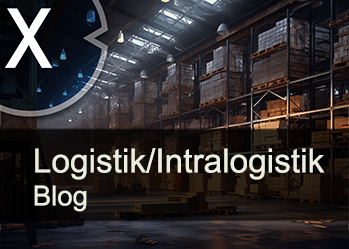Container port with deep-water container terminals in Swinoujscie (Swinemünde) – Poland's gateway to the world
Xpert pre-release
Language selection 📢
Published on: August 6, 2025 / Updated on: August 6, 2025 – Author: Konrad Wolfenstein

Container port with deepwater container terminals in Swinoujscie (Swinemünde) – Poland's gateway to the world – Creative image: Xpert.Digital
A challenge to Hamburg & Co.? Poland is investing billions in a new superport for the world's largest ships
A project of the century on the Baltic Sea – bigger, deeper, more modern: A port is being built in Poland that will dwarf even the world's largest ships
One of Central Europe's most ambitious infrastructure projects is currently being built on Poland's Baltic coast. In Świnoujście, just a few kilometers from Germany's Baltic resorts, a modern deep-water container port is taking shape that will permanently change Europe's maritime landscape. The project, scheduled for completion by 2029, marks a turning point in the Polish port industry and underscores the country's growing importance as a logistics hub between West and East.
Swinoujscie's strategic location on the Pomeranian Bay, directly at the mouth of the Swine River into the Baltic Sea, predestines it for a port of international importance. Its proximity to Germany and convenient transport links to the European hinterland make the project a key logistical investment for all of Central Europe.
Suitable for:
- Container terminal logistics in inland Europe: Container high-bay warehouses for inland ports and the internal market
The vision of a modern logistics center
The new container terminal in Świnoujście is far more than just another port on the Baltic Sea. It is a visionary facility that, upon completion, will be among the most modern and efficient ports in Europe. Plans call for the world's largest container ships to dock here – giants of the sea with lengths of up to 400 meters.
These dimensions are not a coincidence, but a conscious decision by the Polish government to position itself in the international competition among seaports. While many Baltic Sea ports can only handle smaller vessels due to their limited water depth, Świnoujście will be able to accommodate even the latest generation of large container ships.
The capacity of the new terminal is impressive. Two of the world's largest container ships can be loaded and unloaded simultaneously at two parallel quays. This enables efficient handling and minimizes waiting times for shipping companies. The technical equipment will be state-of-the-art, with automated cranes, intelligent logistics systems, and digital port management.
Investments worth billions
The financial dimensions of the project reflect its importance. With an investment volume of EUR 580 million for the container terminal alone and an additional EUR 2.3 billion for maritime infrastructure, it is one of the largest single investments in the history of the Polish maritime industry.
These enormous sums are flowing into various subprojects. In addition to the actual terminal, modern storage areas, administrative buildings, customs clearance facilities, and a state-of-the-art traffic management system are being built. Particularly cost-intensive is the creation of the necessary maritime infrastructure, which includes, among other things, a new shipping channel.
Financing is provided through a combination of state funds, EU funding programs, and private investment. The Polish government has declared the project a national priority and is providing significant funding from the state budget. At the same time, funds are flowing from various EU sources, as the port is considered a key component of the trans-European transport network.
The new fairway as a technical masterpiece
A central element of the project is the creation of a new fairway that will allow large container ships to safely reach Świnoujście. With a planned length of 65 kilometers and a depth of 17 meters, this fairway represents an enormous technical challenge.
The dredging work for the fairway is one of the most complex measures of the entire project. Millions of cubic meters of sand and sediment must be removed from the seabed to achieve the necessary water depth. State-of-the-art floating dredgers will be used, operating around the clock.
The environmental impacts of these massive interventions in the seabed are being carefully monitored. Extensive environmental impact assessments have been conducted, and measurements will be taken continuously during the construction phase to ensure that impacts on the marine ecosystem are minimized.
International cooperation in construction
The realization of a project of this magnitude requires international expertise. The Polish government has therefore commissioned a consortium of companies from Qatar and Belgium to build the terminal. This partnership brings not only the necessary technical know-how but also international experience in the construction of major ports.
The Qatari partners contribute their expertise in the construction of modern port facilities in the Persian Gulf, while the Belgian companies contribute their many years of experience in European port construction. This combination promises an optimal blend of innovation and proven practices.
The collaboration spans all phases of the project, from detailed planning through construction to commissioning. State-of-the-art project management methods are used to ensure that the ambitious schedule is met.
Poland's growing importance in container transport
The decision to build the deep-water container terminal in Świnoujście is no coincidence. In recent years, Poland has experienced remarkable growth in container handling. Handling volumes at Polish ports have steadily increased, reaching a volume of 3.3 million standard containers last year.
This positive development is due to several factors. Firstly, Poland benefits from its geographical location as a bridge between Western and Eastern Europe. Secondly, the country's strong economic growth has led to increased import and export volumes. Last but not least, improved hinterland connections also play an important role.
The Polish government under Prime Minister Donald Tusk has set ambitious goals. Container throughput in Polish ports is to increase to up to ten million standard containers by 2030. This would represent a tripling of the current volume and make Poland one of the most important container transshipment hubs on the Baltic Sea.
Economic impact on the region
The new container port will have far-reaching economic impacts on the entire region. Experts predict that several thousand new jobs will be created, both directly and indirectly. In addition to the employees at the port itself, numerous new positions will also be created in the upstream and downstream sectors.
The local economy will benefit from the increased demand for services. Hotels, restaurants, transportation companies, and many other industries will benefit from the increased business volume. At the same time, the improved infrastructure will increase the region's attractiveness for further investment.
For the city of Świnoujście, the project represents a historic opportunity. The city, traditionally dominated by tourism, will develop into an important economic center. However, this will require adjustments in urban development to reconcile the various uses – tourism, residential areas, and port – .
Challenges and resistance
As with any major project, the construction of the container port in Świnoujście faces challenges and opposition. Environmentalists have raised concerns about the impact on the sensitive Baltic Sea ecosystem. The region around Świnoujście is home to various protected species and habitats that could be impacted by the port's construction.
Local residents also have some reservations about the project. They fear an increase in noise and air pollution, as well as negative impacts on tourism. The proximity to the popular German Baltic Sea resorts on Usedom makes these concerns particularly relevant.
The Polish government and project managers have responded to these concerns. Extensive environmental and noise protection measures have been incorporated into the plans. At the same time, intensive dialogue has been conducted with the affected communities and interest groups to find compromises and increase acceptance for the project.
Your container high-bay warehouse and container terminal experts

Container high-bay warehouses and container terminals: The logistical interplay – Expert advice and solutions – Creative image: Xpert.Digital
This innovative technology promises to fundamentally change container logistics. Instead of stacking containers horizontally as before, they are stored vertically in multi-tiered steel rack structures. This not only enables a drastic increase in storage capacity within the same space but also revolutionizes the entire processes in the container terminal.
More about it here:
How the new deep-water port strengthens Poland as a logistics power
The schedule and next steps
The construction of the container port is following a tight schedule. According to Deputy Minister of Infrastructure Arkadiusz Marchewka, the first concrete construction measures are scheduled to begin in the third or fourth quarter of this year. The first step will be the construction of a technical access road, which is necessary for the delivery of construction materials and large equipment.
In the coming months, work will gradually intensify. Dredging for the new fairway is expected to take several years and represents one of the most time-critical aspects of the project. In parallel, work will begin on the quays and landside infrastructure.
Completion of the entire project is scheduled for 2029. This timeframe is ambitious, but realistic, according to the project managers. However, experience from other major projects shows that delays are not uncommon for projects of this magnitude.
Integration into the European transport network
The new container port in Świnoujście will not operate in isolation, but is designed as an integral part of the trans-European transport network. Connections to the hinterland are crucial to the project's success.
Therefore, parallel to the port construction, transport links are also being expanded. The rail connection is being modernized and electrified to enable efficient and environmentally friendly transport of containers into the interior of the country. New motorway connections will ensure better road connections.
The connection to major logistics centers in Poland and beyond is particularly important. The port will be directly connected to Warsaw, Krakow, and other major Polish cities via modern rail links. At the same time, connections will be established to important economic centers in Germany, the Czech Republic, and Slovakia.
Technological innovation in port operations
The new container port will rely on state-of-the-art technology from the outset. Digitalization will play a central role. An intelligent port management system will control and optimize all processes, from ship registration and container handling to customs clearance.
Automated container cranes will ensure efficient handling. These cranes can be precisely controlled and operate largely autonomously. Driverless transport systems will transport containers from ships to storage areas and vice versa. This automation not only increases efficiency but also safety in port operations.
The implementation of blockchain technology for document management will revolutionize the processing of customs and transport documents. Tamper-proof digital documentation will accelerate processes and minimize sources of error.
Suitable for:
- Heavy-duty logistics and port automation: Mega ports need more space – vertical storage as the answer
Sustainability as a guiding principle
Despite the size of the project, sustainability plays a key role in its planning. The port will be built and operated according to state-of-the-art environmental standards. This encompasses various aspects, from energy supply to waste management to water protection.
A significant portion of the energy for port operations will come from renewable sources. Large photovoltaic systems on the warehouses and wind turbines in the surrounding area will make a significant contribution to the energy supply. At the same time, investments are being made in energy-efficient technologies to minimize overall energy consumption.
A modern shore power supply will be installed for the ships calling at the port. This will allow the ships to switch off their diesel generators while docked and instead draw clean electricity from the shore. This measure will significantly reduce air pollution in the port area.
Impact on the Baltic Sea region
The new container port will influence the dynamics of the entire Baltic Sea region. The established ports of Hamburg, Copenhagen, and Gothenburg will have a strong new competitor. This will lead to increased competition, which will ultimately benefit customers through better services and more competitive prices.
At the same time, new opportunities for cooperation are opening up. The port of Świnoujście could serve as a transshipment point for goods transported further into the Baltic Sea region. The improved infrastructure makes the entire region more attractive for international trade flows.
The geopolitical significance of the project should not be underestimated. With the new port, Poland will strengthen its position as a major player in European logistics while simultaneously reducing its dependence on foreign ports. This is particularly important in light of current global political developments.
The role of the port administration
The Port Authority of Szczecin and Świnoujście, as the investor, bears primary responsibility for the project. This organization has proven its ability to successfully implement complex infrastructure projects in recent years. Experience gained from operating existing ports will be incorporated into the planning of the new terminal.
The administration is working closely with the Polish Ministry of Infrastructure, which has taken over the coordination of the project. This close integration of local expertise and national support is a key factor for the project's success.
At the same time, the port authority is preparing for future challenges. New organizational structures are being created, staff are being trained, and international partnerships are being established. All of this is being done with the goal of ensuring smooth operations from day one.
Training and qualification
A project of this magnitude requires a large number of qualified specialists. The region is therefore intensively preparing for this challenge. New training programs are being developed to qualify young people for work in the port.
Universities and technical colleges in the region are expanding their degree programs in logistics and port management. At the same time, retraining programs are being offered for workers from other industries. These measures are intended to ensure that sufficient qualified personnel will be available when the port begins operations.
International cooperation also extends to the field of education. Exchange programs with established ports allow Polish specialists to gain international experience. At the same time, foreign experts are invited to share their knowledge in Poland.
Future prospects and expansion opportunities
Although the current project is already impressive in scale, planners are already considering future expansions. The port area offers space for additional terminals and logistics facilities. Depending on the development of container traffic, further expansion phases could be realized in the coming decades.
The possibilities in the area of specialized terminals are particularly interesting. In addition to traditional container handling, specialized facilities for refrigerated containers, hazardous materials, or project cargo could be developed. The integration of production facilities directly into the port area is also being discussed.
Digitalization will continue to play an important role in the future. The port could become a testing ground for new technologies, from autonomous ships and drones for port surveillance to artificial intelligence for optimizing logistics processes.
Significance for German-Polish relations
The project's geographical proximity to Germany also makes it relevant for German-Polish economic relations. German companies will benefit from the improved logistics opportunities, especially those with business relations in Eastern Europe and Asia.
At the same time, opportunities arise for German suppliers and service providers. The proximity to the border enables close cooperation in various fields. German engineering firms, logistics companies, and technology providers can contribute their expertise.
The challenge will be to minimize potential conflicts between the port project and tourism on the German side. Constructive dialogue and joint solutions are necessary to reconcile both interests.
Port of the Future: Investment worth billions strengthens Poland as an economic power
The construction of the deep-water container terminal in Świnoujście marks a turning point in the development of the Polish maritime industry. With billions of euros invested, a port facility is being built that will set new standards and establish Poland as a major player in international maritime trade.
The project demonstrates the courage and vision of the Polish government to invest in the future. Despite all the challenges and resistance, the project is being consistently pushed forward. Support at the highest political level and the involvement of international partners create good conditions for a successful completion.
When the first large container ships dock in Świnoujście in 2029, it will be a historic moment not only for Poland, but for all of Central Europe. The new port will shorten trade routes, promote economic growth, and transform the region sustainably. It will be exciting to see how this ambitious project develops in the coming years and what impetus it will provide for the economic development of Poland and its neighbors.
Advice – planning – implementation
I would be happy to serve as your personal advisor.
Head of Business Development
Advice – planning – implementation
I would be happy to serve as your personal advisor.
contact me under Wolfenstein ∂ Xpert.digital
call me under +49 89 674 804 (Munich)


























